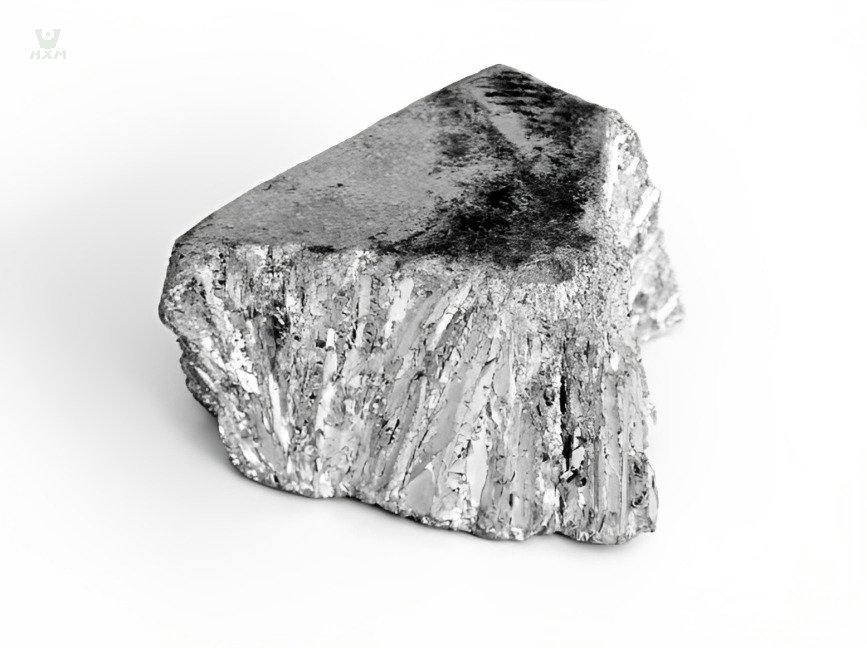In the world of metals, certain names evoke a sense of durability, strength, and resilience. Among these, steel stands tall as a symbol of industrial might. But what about aluminium? Often grouped together due to their shared presence in construction and manufacturing, aluminium’s true nature often remains veiled in misconceptions. In this exploration, we embark on a journey to unravel the nuances of aluminium’s unique identity and answer the intriguing question: Is aluminium a steel? Prepare to venture beyond the surface and discover the surprising truths that lie within the world of metals.
Is aluminium a steel?
No, aluminium is not a steel. Steel is an alloy primarily composed of iron and carbon, often with additional elements to enhance its properties. Aluminium, on the other hand, is a chemical element with the symbol Al and atomic number 13. While both aluminium and steel are used in various industries, they have distinct compositions, properties, and applications. Aluminium is known for its lightweight nature, corrosion resistance, and excellent thermal conductivity, while steel is prized for its strength and durability.
Aluminium and steel, each with its unique set of properties and applications, have occasionally been erroneously equated due to their presence in similar contexts. Their roles in construction, manufacturing, and everyday items have led to a presumption that they might be interchangeable, or even one and the same. However, it’s essential to untangle this misconception and recognize the factual differences that define these two materials.
Composition and Elements
At the heart of understanding the differences between aluminium and steel lies an exploration of their fundamental composition and elemental makeup. Delving into the building blocks of these metals is essential to grasp the origins of their unique properties and characteristics.
Steel
Steel, a stalwart in the world of metallurgy, is a remarkable example of how a seemingly straightforward material can exhibit a wide array of properties and applications due to its intricate composition. At its core, steel is an alloy primarily comprised of iron and carbon, with the precise amount of carbon determining its distinct characteristics.
Iron, a crucial element abundant in the Earth’s crust, forms the structural backbone of steel. Its crystalline structure provides the foundation for steel’s strength and malleability. However, it’s the addition of carbon that transforms iron into steel. The percentage of carbon in steel can range from a mere fraction to around 2%, significantly influencing its final attributes.
The carbon atoms intersperse within the iron’s crystal lattice, disrupting its regular pattern. This disruption hinders the iron atoms from sliding past each other with ease, enhancing the material’s rigidity and tensile strength. As the carbon content increases, the steel’s hardness also intensifies, rendering it suitable for diverse applications, from construction beams to sharp cutting tools.
This controlled blending of iron and carbon allows engineers and metallurgists to fine-tune steel’s properties to match specific needs. By manipulating the carbon content and incorporating additional elements like chromium, nickel, and manganese, various types of steel emerge, each tailored for particular uses. From stainless steel’s corrosion resistance to high-strength alloy steels, this alloy’s flexibility is a testament to the synergy between its constituent elements.
In summary, steel’s composition as an alloy predominantly constituted of iron and carbon exemplifies the remarkable precision with which materials can be engineered to fulfill a spectrum of requirements. It’s the subtle interplay between these atoms that grants steel its remarkable strength, versatility, and the ability to underpin countless aspects of our modern world.
Aluminium
Unlike steel, which is an alloy meticulously crafted by combining various elements, aluminium stands as a singular chemical element on the periodic table. With atomic number 13 and symbol Al, aluminium boasts a distinct identity that sets it apart from alloys like steel. This elemental uniqueness manifests in a plethora of properties that define aluminium’s behavior in various contexts.
Aluminium’s atomic structure reveals a trio of electrons orbiting its nucleus. This configuration imparts certain traits, such as its lightweight nature and remarkable conductivity. Its low atomic mass grants it a density considerably lower than that of steel, contributing to its widespread use in lightweight applications ranging from aircraft frames to beverage cans.
The nature of aluminium’s atomic bonds reinforces its corrosion resistance. A protective layer of aluminium oxide naturally forms on its surface, acting as a barrier against environmental elements. This characteristic ensures aluminium’s longevity and applicability in constructions exposed to diverse weather conditions.
Furthermore, aluminium’s thermal conductivity surpasses that of steel, rendering it an excellent heat conductor. This property finds utility in applications like cookware and electronics, where efficient heat dissipation is paramount.
It’s important to recognize that aluminium’s distinct properties emerge from its elemental nature. Unlike the careful alloying process of steel, aluminium’s attributes are inherent, engrained in its atomic structure. In collaboration with experts from the aluminum factory, these attributes are harnessed to produce a wide array of products, exemplifying the metal’s versatility across industries.
Properties and Characteristics
In the realm of metallurgy, the properties and characteristics of aluminium and steel define their distinct roles across industries. By delving into these attributes, we unravel the scientific foundations that underscore their diverse applications, guided by the expertise of the aluminum factory.
Steel
Steel’s prominence stems from a potent combination of qualities that render it indispensable across industries. At its core, steel’s strength and durability are exceptional, stemming from its alloyed composition. Its crystalline structure, bolstered by elements like carbon and other alloying agents, confers upon it a remarkable ability to withstand mechanical stress. This grants steel a dominant presence in applications demanding structural integrity, whether in towering skyscrapers or sturdy bridges.
Furthermore, steel’s durability against wear, tear, and deformation is a hallmark of its utility. From heavy machinery to automotive components, its resistance to deformation under stress ensures reliability and longevity.
Aluminium
In contrast, aluminium’s distinctive properties paint a different canvas, one where lightweight construction and corrosion resistance are at the forefront. Its low density, a fraction of that of steel, makes it an ideal choice for applications where weight reduction is critical. This quality finds its zenith in the aerospace industry, where aluminium’s ability to soar without sacrificing structural integrity is of paramount importance.
Moreover, aluminium’s intrinsic resistance to corrosion, facilitated by its naturally occurring oxide layer, renders it an essential contender in environments prone to moisture and oxidation. This quality has earned aluminium a coveted position in applications exposed to harsh weather conditions or corrosive substances.
The dichotomy between steel’s strength and aluminium’s lightweight versatility underscores the remarkable diversity of materials and their roles in engineering marvels and everyday essentials.
Guided by the expertise of the aluminum factory, both steel and aluminium reveal their hidden facets. The interplay of their properties shapes industries, from towering buildings to sleek airplanes, exemplifying the intricate marriage of science and engineering in material selection and design.
Differences in Production and Processing
The path from raw materials to finished products varies significantly for aluminium and steel, owing to their distinct chemical properties and manufacturing processes. Let’s delve into the intricate world of production and processing guided by the expertise of the aluminum factory, uncovering how steel and aluminium take shape through different methodologies.
Steel Production
Steel production involves a complex series of metallurgical processes that culminate in the creation of diverse steel types, each tailored to specific applications. The primary method, known as the integrated steelmaking process, starts with the extraction of iron ore, which is then refined into iron through blast furnaces. Subsequently, carbon is introduced by combining iron with coal or coke in a process called iron-carbon alloying. This blend of iron and carbon forms molten pig iron, which is then processed in converters to adjust the carbon content and eliminate impurities. Alloying elements like manganese, chromium, and nickel can be introduced to create various steel grades. This mixture undergoes continuous casting or rolling, resulting in the final steel products.
Aluminium Extraction & Processing Methods
Aluminium, in contrast, originates from bauxite ore. The process commences at the aluminum factory with the extraction of alumina (aluminium oxide) from bauxite through the Bayer process. This alumina is subjected to the Hall-Héroult electrolytic process. Here, a bath of molten alumina dissolved in molten cryolite is electrolyzed, liberating aluminium at the cathode. Oxygen, simultaneously produced, reacts with carbon anodes to form carbon dioxide. The result is pure aluminium, which undergoes further refining before being shaped into a variety of products.
By exploring these divergent pathways of production and processing, we unravel the profound influence of chemical properties, industrial methods, and the collaboration of experts at the aluminum factory. The juxtaposition of these processes underscores the intricate dance of science and engineering, shaping the materials that underpin modern innovation.
Industrial Applications
The impact of aluminium and steel reverberates across a multitude of industries, each metal finding its niche due to its distinct properties. The aluminum factory’s expertise plays a pivotal role in harnessing these metals for diverse applications that shape our modern world.
Industries Where Steel is Commonly Used
The utilization of steel across following industries underscores its foundational role in shaping modern society. Its properties of strength and durability lend themselves seamlessly to applications where reliability, safety, and resilience are paramount.
- Construction Industry: The construction sector relies heavily on steel's exceptional strength and durability. It serves as the backbone for skyscrapers, offering structural integrity to support the towering heights. Bridges, renowned for their longevity and load-bearing capabilities, owe their robustness to steel. Additionally, steel's reinforcement within concrete structures enhances their strength, longevity, and resistance to environmental stresses.
- Automotive Domain: In the automotive industry, steel's robust nature is instrumental in ensuring vehicle safety and performance. It forms the foundation for vehicle frames, providing the necessary strength to protect passengers in the event of collisions. Various components, such as doors, hoods, and chassis, benefit from steel's resilience, contributing to the overall durability of automobiles.
- Heavy Machinery and Equipment: Industries relying on heavy machinery, such as mining, construction, and manufacturing, harness steel's properties for machinery components. The robustness of steel ensures that equipment can endure the rigorous demands of heavy-duty operations, enhancing their reliability and longevity.
- Pipelines and Shipbuilding: In the realm of infrastructure, steel finds its place as the material of choice for pipelines and shipbuilding. Its resistance to corrosion and structural integrity make it an ideal candidate for transporting fluids and gases over long distances through pipelines. Similarly, the maritime industry relies on steel for ship hulls and structures, ensuring vessels can withstand the harsh conditions of the open sea.
Aluminium's Applications in Different Sectors
The aluminum factory’s expertise plays a pivotal role in following applications, shaping the raw material into products that revolutionize industries. Aluminium’s specific advantages, harnessed through meticulous processing and engineering, continue to pave the way for sustainable advancements across sectors, embodying the seamless integration of science, innovation, and real-world applications.
- Aerospace Industry: Aluminium's lightweight nature is a game-changer in aerospace, reducing fuel consumption and enabling aircraft to achieve higher altitudes. Collaborations between the aerospace sector and the aluminum factory produce components that strike a delicate balance between weight and structural integrity, contributing to the efficiency of modern air travel.
- Transportation Sector: Aluminium's weight reduction properties extend their benefits to the transportation industry. Lightweight aluminium components in automobiles, trains, and even bicycles contribute to enhanced fuel efficiency and reduced emissions. Collaborative efforts between manufacturers and the aluminum factory drive innovation in vehicle design, aligning with sustainability goals.
- Electronics and Technology: Aluminium's remarkable electrical conductivity and heat dissipation qualities make it indispensable in the electronics sector. From smartphones to laptops, aluminium components ensure effective heat management, thereby prolonging the lifespan of electronic devices. The expertise of the aluminum factory enables the precision crafting of these components, pushing the boundaries of technological advancement.
- Architectural Applications: Aluminium's corrosion resistance and malleability lend themselves to architectural masterpieces. Collaborations between architects and the aluminum factory result in facades, windows, and roofing that stand the test of time, even in challenging environmental conditions. Its ability to be shaped into intricate designs offers architects the creative freedom to transform visions into reality.
- Packaging and Consumer Goods: Aluminium's impermeability and lightweight nature revolutionize packaging solutions, preserving the quality and freshness of food and beverages. It forms the foundation of convenient and hygienic packaging options. Collaborative efforts between manufacturers and the aluminum factory lead to innovations in packaging design that align with sustainability and consumer convenience.
conclusion
In the intricate tapestry of materials science, the distinct identities of aluminium and steel weave a story of diversity, strength, and innovation. Through this exploration, guided by the expertise of the aluminum factory, we’ve unveiled the nuanced differences that define these metals and their pivotal roles across industries.
As we reflect on our journey, the differences between aluminium and steel come into sharp focus. Steel’s genesis as an alloy of iron and carbon bestows it with unparalleled strength and durability, making it a mainstay in construction, transportation, and heavy machinery. Aluminium, an elemental marvel, boasts lightweight versatility and corrosion resistance, positioning it as an essential choice in aerospace, technology, and architectural realms.
The aluminum factory’s expertise underscores the importance of accurate knowledge when discussing materials within various industries. Precise understanding of the properties, advantages, and limitations of aluminium and steel guides intelligent decision-making in engineering, design, and manufacturing. As we navigate the intricate landscape of modern innovation, informed choices driven by science and expert collaboration pave the way for sustainable progress and technological breakthroughs.
In the dynamic world of materials, the aluminum factory stands as a beacon of expertise, shaping raw materials into functional wonders that underpin our everyday lives. The symbiotic relationship between science, industry, and innovation manifests through the unique attributes of aluminium and steel, echoing the harmonious collaboration between experts and the materials they mold.







